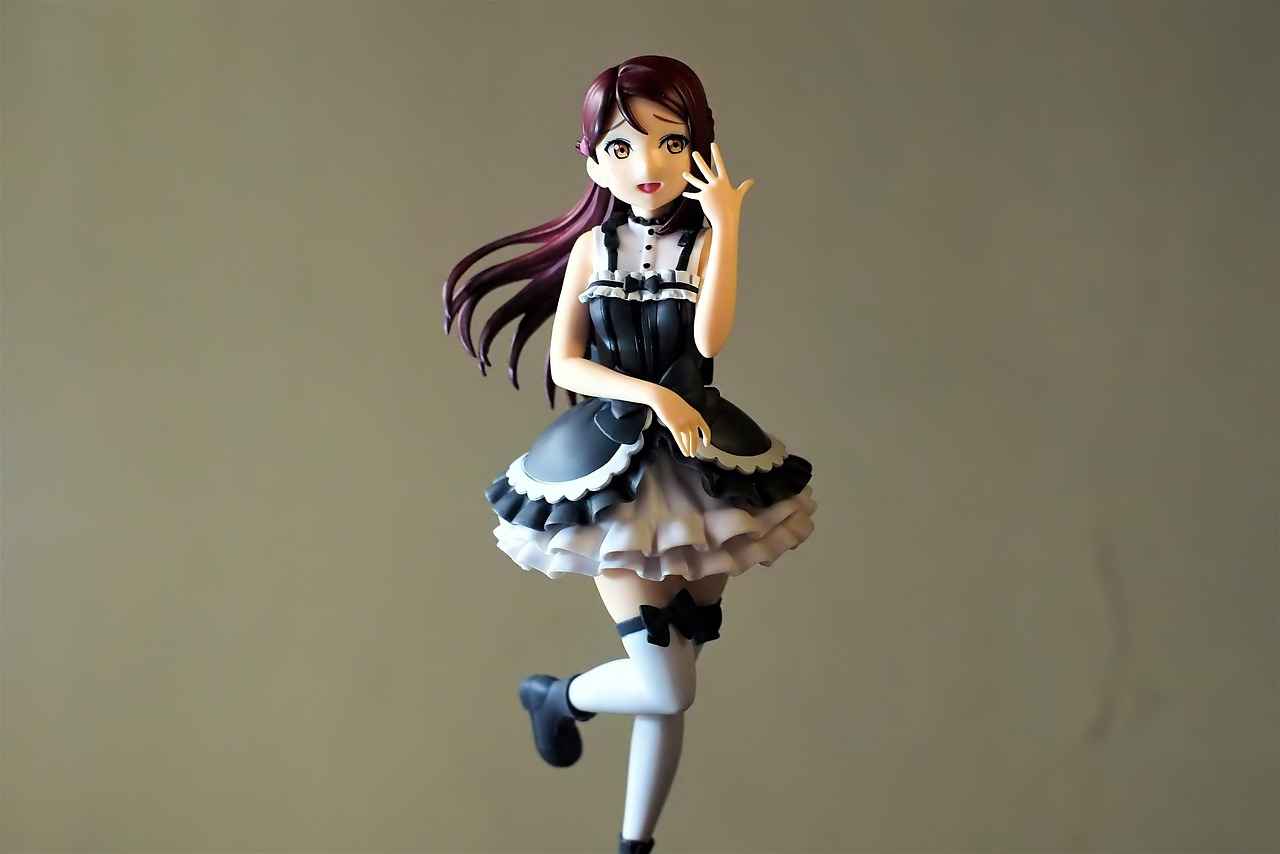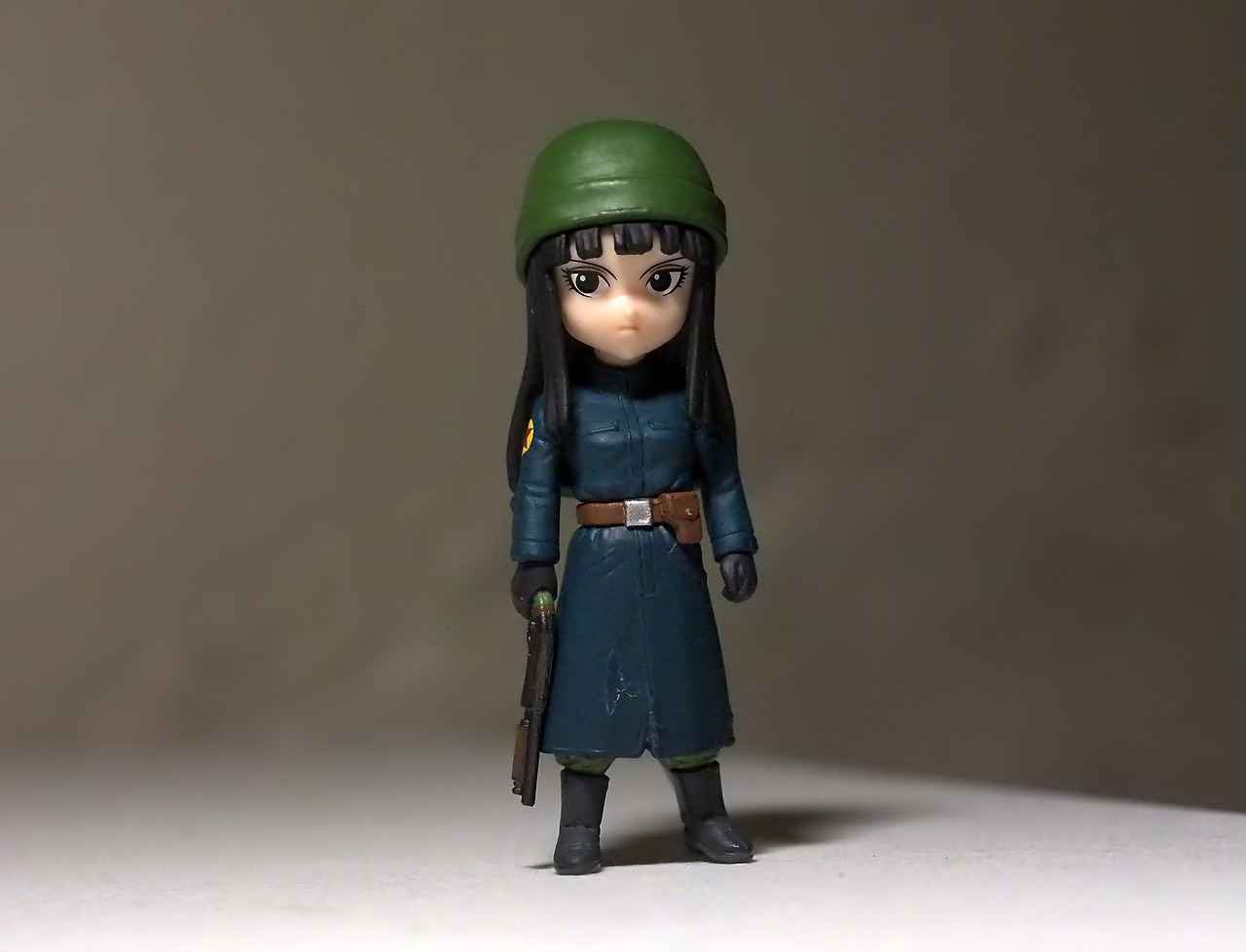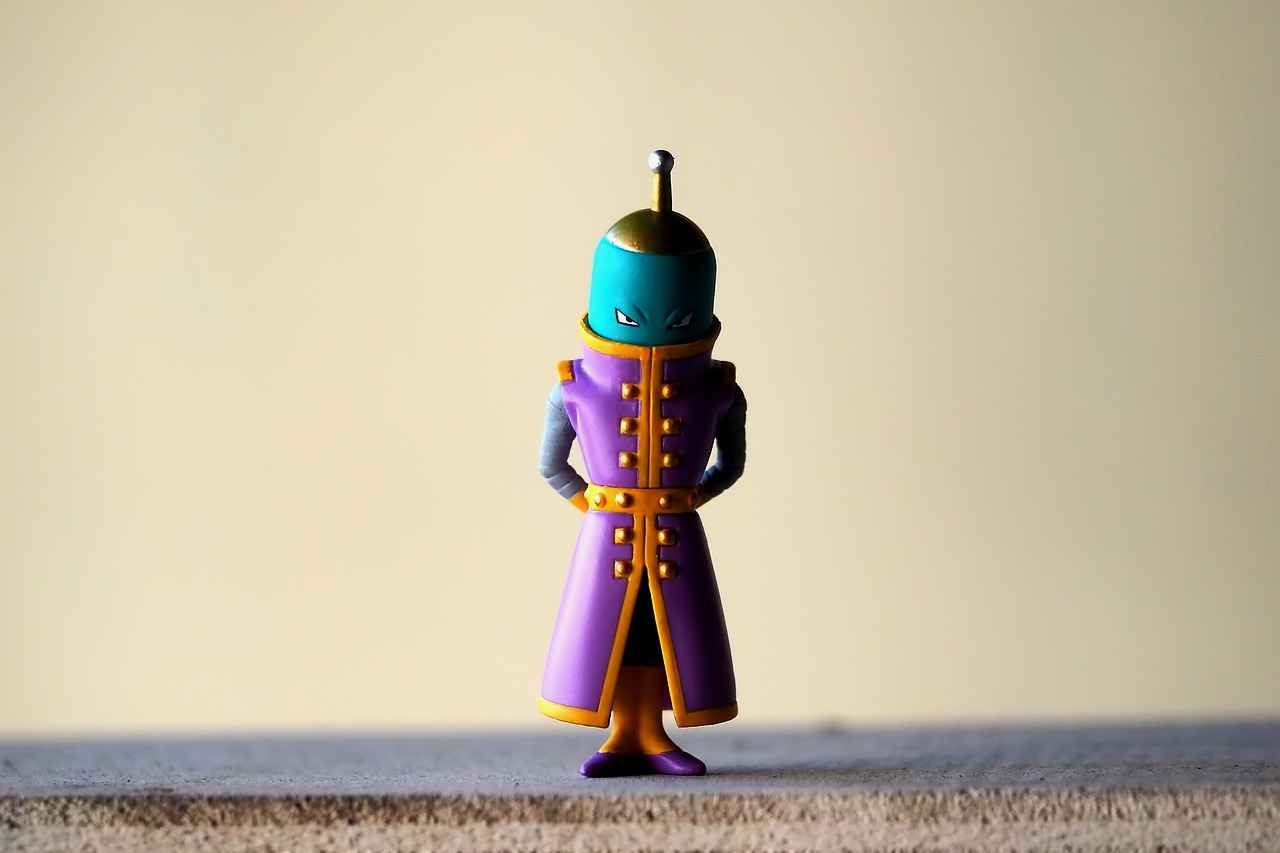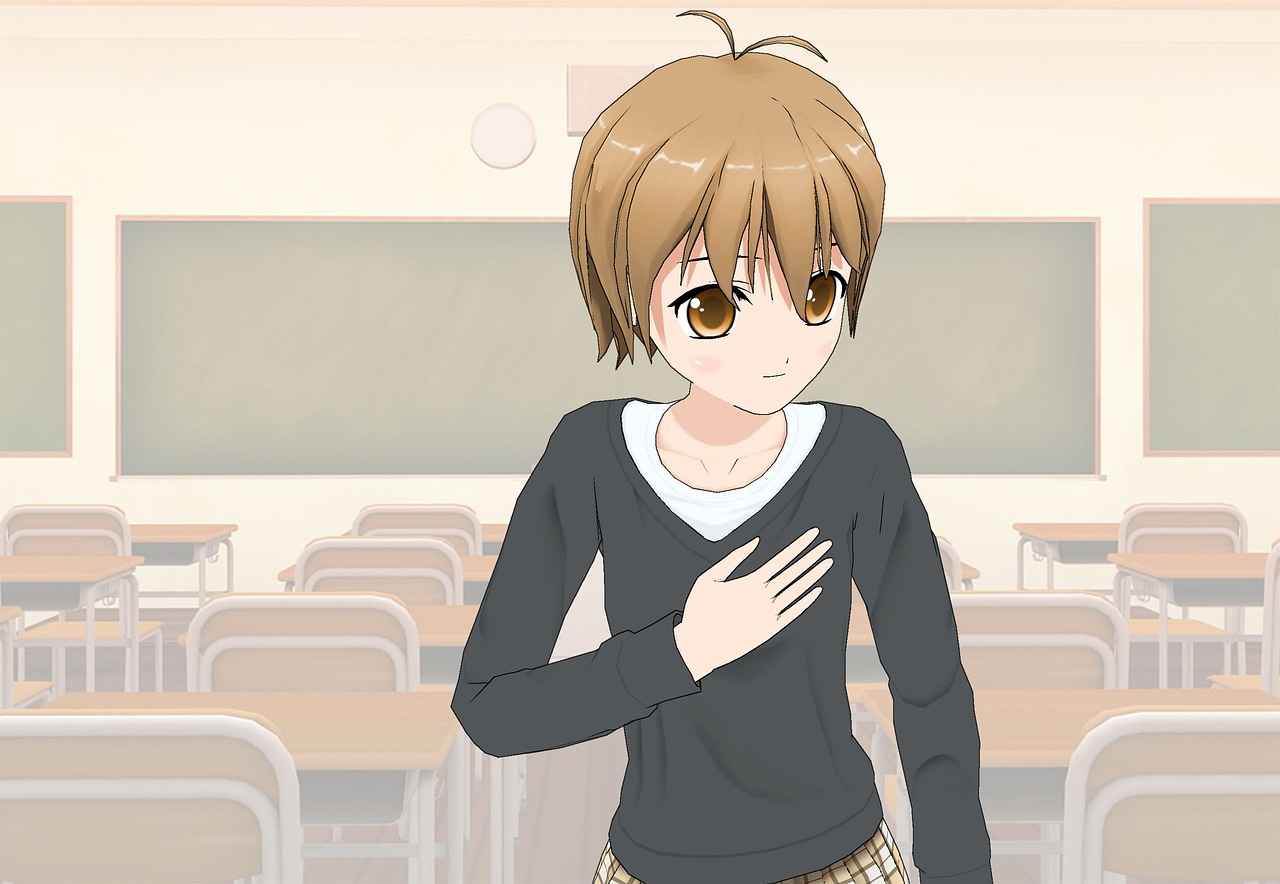This article delves into the most thrilling tournament arcs in Shonen anime, emphasizing their profound impact on character development, storytelling, and fan engagement. These arcs are not just about battles; they offer a platform for characters to evolve, face their fears, and build relationships, making them unforgettable in the world of anime.
What Makes a Great Tournament Arc?
A great tournament arc is characterized by a blend of high-stakes battles, character growth, and engaging storylines. Key elements include:
- Intense Competition: Each battle pushes characters to their limits.
- Character Development: Arcs often reveal deeper aspects of characters.
- Dynamic Relationships: Friendships and rivalries are forged through competition.
Top 5 Iconic Tournament Arcs
Here are five tournament arcs that have left a significant mark on fans:
- Dragon Ball Z’s World Martial Arts Tournament: This classic arc set the benchmark for future tournaments, featuring legendary battles and iconic characters.
- Yu Yu Hakusho’s Dark Tournament Saga: Renowned for its intense battles, this saga showcases character growth and intricate relationships.
- Naruto’s Chunin Exams: This arc introduces diverse characters and fighting styles, emphasizing teamwork and strategy.
Character Development Through Competition
Tournament arcs often act as a catalyst for character development. They reveal deeper layers of characters and their motivations:
- Overcoming Personal Challenges: Characters confront fears and insecurities, leading to significant growth.
- Building Rivalries and Friendships: The competitive environment enhances character dynamics.
The Role of Stakes in Tournament Arcs
High stakes create tension and excitement, influencing character actions:
- Life-or-Death Scenarios: Many arcs escalate to life-or-death scenarios, adding emotional weight.
- Consequences of Defeat: Losing can have significant ramifications for characters, impacting their journeys.
Fan Reactions and Cultural Impact
Tournament arcs generate passionate fan reactions and influence the cultural landscape of anime:
- Merchandise and Spin-offs: Successful arcs often lead to merchandise, showcasing their popularity.
- Community Engagement: These arcs foster discussions, fan art, and cosplay, creating a vibrant culture.
Conclusion: The Lasting Legacy of Tournament Arcs
In conclusion, tournament arcs have become a staple of Shonen anime, offering thrilling battles and character development. Their influence continues to shape the genre and engage audiences worldwide, ensuring their place in anime history.

What Makes a Great Tournament Arc?
A great tournament arc is a hallmark of Shonen anime, often captivating audiences with its blend of action, drama, and character exploration. These arcs are not merely about the battles; they encapsulate the essence of growth, rivalry, and emotional stakes that resonate deeply with viewers. In this section, we will explore the key elements that contribute to a memorable tournament experience.
- High-Stakes Battles: At the heart of any great tournament arc lies the thrill of competition. Each battle pushes characters to their limits, often featuring life-or-death scenarios that heighten the tension. The stakes must be palpable, whether it’s a title, a personal vendetta, or the fate of friends and allies.
- Character Growth: A successful tournament arc serves as a transformative journey for its characters. As they face formidable opponents, they confront their own weaknesses and fears. This journey often leads to significant character development, allowing them to evolve into stronger individuals by the arc’s conclusion.
- Engaging Storylines: Beyond battles, the narratives woven through tournament arcs must be compelling. Subplots involving friendships, rivalries, and personal stakes enrich the main storyline, making the audience invested in the outcomes of the matches. These layers add depth, ensuring that viewers are not just watching for the fights but also for the emotional journeys.
- Dynamic Character Interactions: Tournaments often bring together a diverse cast of characters, leading to unique interactions. Rivalries can spark intense confrontations, while unexpected alliances may form, showcasing the complexity of relationships and enhancing the overall narrative.
- Consequences of Victory and Defeat: The aftermath of battles plays a critical role in shaping the characters and their paths. Winning can lead to newfound responsibilities or challenges, while losing can serve as a catalyst for growth. The consequences must feel significant, impacting not only the characters involved but also their respective arcs.
In summary, a great tournament arc is a multifaceted experience that goes beyond mere combat. It combines high-stakes battles, character development, and engaging storylines to create a captivating narrative that leaves a lasting impression on fans.

Top 5 Iconic Tournament Arcs
In the realm of Shonen anime, tournament arcs hold a special place in the hearts of fans. These arcs are not just about battles; they encapsulate character growth, emotional stakes, and unforgettable moments. In this section, we delve into five iconic tournament arcs that have significantly impacted the anime landscape. Each arc is a testament to the power of competition, showcasing unique battles and intricate character dynamics that enhance the overall narrative.
- Dragon Ball Z’s World Martial Arts Tournament: This arc is a cornerstone of the Shonen genre, introducing audiences to epic showdowns and legendary fighters. The tournament not only highlights Goku’s growth but also emphasizes the importance of friendship and rivalry, setting a standard for future tournaments.
- Yu Yu Hakusho’s Dark Tournament Saga: Renowned for its intensity, this saga features battles that test the limits of the characters. The evolution of Yusuke and his friends during this arc showcases their personal struggles and triumphs, making it a fan favorite.
- Naruto’s Chunin Exams: The Chunin Exams are pivotal in Naruto, introducing a diverse cast of characters and their unique abilities. This arc emphasizes teamwork and strategy while allowing significant character development, particularly for Naruto and his peers.
- My Hero Academia’s U.A. Sports Festival: This tournament arc is a fresh take on the classic format, blending competition with character exploration. It highlights the aspirations of aspiring heroes and the challenges they face, making it a crucial part of the series.
- One Piece’s Davy Back Fight: While unconventional, this arc offers a unique twist on the tournament theme. The Davy Back Fight showcases the Straw Hat Pirates’ camaraderie and creativity, emphasizing the importance of teamwork in overcoming challenges.
These tournament arcs not only provide thrilling battles but also serve as a medium for character development, making them memorable experiences for viewers. The interplay of competition and personal growth resonates deeply, ensuring that these arcs remain a significant part of anime culture.
Dragon Ball Z’s World Martial Arts Tournament
is not just a storyline; it is a cultural phenomenon that has left an indelible mark on the world of anime. This tournament arc set the benchmark for future competitions in Shonen anime, showcasing a blend of intense battles, character growth, and unforgettable moments that continue to resonate with fans across generations.
The tournament features a diverse cast of characters, each with their unique abilities and motivations. From Goku, the ever-optimistic hero, to the fierce and competitive Vegeta, the dynamics between these characters add depth to the narrative. The battles are not merely physical confrontations; they represent personal struggles, rivalries, and the quest for self-improvement.
One of the most significant aspects of the World Martial Arts Tournament is its ability to highlight character development. Characters face formidable opponents, pushing them to their limits and forcing them to confront their fears. This journey of growth is relatable, making it easy for fans to connect with their favorite fighters.
| Character | Key Traits |
|---|---|
| Goku | Optimistic, determined, and powerful |
| Vegeta | Arrogant, competitive, but evolving |
| Piccolo | Wise, strategic, and a mentor |
The stakes in this tournament are high, with each battle carrying the weight of personal pride and the potential for loss. This sense of urgency compels characters to fight with everything they have, creating memorable clashes that keep viewers on the edge of their seats.
In conclusion, the World Martial Arts Tournament in Dragon Ball Z is a quintessential example of what makes tournament arcs compelling. It combines thrilling action, profound character development, and emotional stakes, ensuring its place in the hearts of fans worldwide. As new generations discover this classic, its legacy continues to inspire and entertain, solidifying its status in the anime landscape.
Yu Yu Hakusho’s Dark Tournament Saga
is widely regarded as one of the most pivotal arcs in the series, captivating audiences with its blend of intense combat and profound character exploration. This saga not only showcases spectacular battles but also serves as a critical turning point for the main characters, particularly Yusuke Urameshi and his friends.
The Dark Tournament Saga unfolds as Yusuke and his allies are thrust into a high-stakes competition against formidable opponents. Each battle is not merely a test of strength but also a reflection of the characters’ growth, revealing their vulnerabilities and motivations. The tournament format allows for unique matchups that challenge each character in different ways, forcing them to confront their pasts and evolve.
- Intense Battles: The combat sequences are meticulously crafted, featuring a variety of fighting styles and techniques that keep viewers on the edge of their seats.
- Character Development: The relationships among Yusuke, Kuwabara, Kurama, and Hiei deepen, showcasing their loyalty and camaraderie as they face overwhelming odds.
- Rivalries and Friendships: New rivalries, particularly with characters like Toguro, add layers to the narrative, emphasizing themes of friendship and perseverance.
Moreover, the Dark Tournament Saga is notable for its emotional weight. Characters face not only physical challenges but also personal demons, making their victories all the more meaningful. The stakes are high, as defeat can lead to dire consequences, including the loss of lives and the fate of the human world.
In conclusion, the Dark Tournament Saga in Yu Yu Hakusho stands out as a masterclass in storytelling within the Shonen genre. It seamlessly intertwines action with character arcs, leaving a lasting impression on fans and setting a benchmark for future tournament arcs in anime.
Naruto’s Chunin Exams
arc stands as a pivotal moment in the beloved series, showcasing not only thrilling battles but also profound character development and intricate storytelling. This arc introduces a diverse cast of characters, each with unique fighting styles and backgrounds, setting the stage for memorable confrontations and alliances.
Throughout the Chunin Exams, teamwork and strategy play crucial roles in the competitors’ journeys. Participants must navigate a series of challenges that test their abilities, intellect, and cooperation with teammates. This emphasis on collaboration highlights the importance of friendship and loyalty, which are central themes in Naruto.
As the arc unfolds, viewers witness significant character growth. For example, characters like Sakura Haruno and Shikamaru Nara evolve from their initial portrayals, confronting their fears and discovering their strengths. This evolution not only enhances their individual narratives but also enriches the overall plot, creating a tapestry of interconnected stories.
The Chunin Exams also serve as a backdrop for exploring rivalries. The intense competition fosters relationships that blend camaraderie with tension, particularly between Naruto and his rivals, such as Sasuke Uchiha and Neji Hyuga. These rivalries drive the narrative forward, adding layers of complexity to the characters’ motivations.
Moreover, the arc introduces significant stakes, as the outcome of the exams can alter the future of the participants. The potential for promotion to Chunin status adds a sense of urgency and excitement, compelling characters to push their limits and confront their personal demons.
In conclusion, the Chunin Exams arc in Naruto is a masterclass in blending action with character development. It not only entertains but also leaves a lasting impact on viewers, making it a defining moment in the series. The lessons learned during this arc resonate throughout the characters’ journeys, solidifying its place in the hearts of fans.

Character Development Through Competition
Tournament arcs in Shonen anime are more than just thrilling battles; they are pivotal moments for character evolution. These arcs provide a unique platform where characters are tested, leading to profound growth and self-discovery. This section delves into the multifaceted ways competition influences character development, revealing deeper layers of their personalities and motivations.
Overcoming Personal Challenges
Throughout tournament arcs, characters often face their own personal demons. These challenges can range from overcoming fears to confronting insecurities that have plagued them for years. For instance, a character who has always been overshadowed by a more powerful rival might find the strength to stand up for themselves during a critical match. This journey of self-discovery not only enhances their individual arcs but also resonates with viewers who may face similar struggles in their lives.
Building Rivalries and Friendships
Competition fosters rivalries and friendships, which are essential components of character dynamics. As characters face off against one another, their relationships evolve, often resulting in unexpected alliances or deep-seated enmity. These interactions can lead to significant character growth, as they learn from each other’s strengths and weaknesses. For example, a fierce rivalry might push a character to train harder, while a budding friendship can lead to newfound teamwork skills. This interplay enriches the narrative, making it more engaging for the audience.
Emotional Stakes and Growth
The emotional stakes in tournament arcs are incredibly high. Characters are not just fighting for victory; they are often battling for their dreams, their teams, or even their loved ones. This urgency compels them to dig deeper within themselves, revealing motivations that may have been hidden until now. As they confront these stakes, viewers witness a remarkable transformation, as characters evolve into stronger, more complex individuals.
In conclusion, tournament arcs serve as a crucible for character development, pushing individuals to confront their fears, build relationships, and face high emotional stakes. These experiences not only shape their identities but also leave a lasting impact on the audience, who can relate to the struggles and triumphs portrayed on screen.
Overcoming Personal Challenges
Tournament arcs in anime are not just about epic battles and flashy moves; they are also profound journeys of personal growth for the characters involved. Throughout these arcs, many characters confront their deepest fears and insecurities, leading to significant transformations by the end of the competition.
- Facing Fears: Characters are often placed in situations that challenge their limits. For instance, a character who has always been afraid of failure might find themselves in a high-stakes match where they must confront this fear head-on.
- Insecurity and Self-Discovery: Many competitors enter tournaments feeling inadequate compared to their peers. As they progress, they begin to recognize their strengths and capabilities, leading to a newfound confidence.
- Resilience: The journey through a tournament often tests a character’s resilience. Overcoming loss or setbacks becomes a pivotal part of their development, teaching them that perseverance is key to success.
For example, in the Chunin Exams arc of Naruto, characters like Naruto Uzumaki face not only formidable opponents but also their own self-doubt. His journey illustrates how competition can act as a catalyst for self-improvement, ultimately shaping him into a more determined and capable ninja.
Moreover, the emotional stakes involved in these arcs amplify the characters’ struggles. As they fight for their dreams, they also battle against their inner demons, making their victories more satisfying and their defeats more poignant. This depth of character development is what makes tournament arcs resonate with audiences, as viewers can relate to the universal themes of struggle and growth.
In conclusion, the challenges faced during tournament arcs are crucial to character development. By pushing characters to confront their fears and insecurities, these arcs not only provide thrilling entertainment but also deliver meaningful narratives that inspire and engage viewers.
Building Rivalries and Friendships
Tournament arcs in Shonen anime are not just about battles; they are pivotal moments that forge deep connections between characters. These arcs often introduce competitors with contrasting personalities, backgrounds, and motivations, leading to the birth of intense rivalries and lasting friendships. As characters face each other in the heat of competition, viewers witness the evolution of their relationships, which adds a rich layer of depth to the narrative.
Throughout these tournaments, characters are pushed to their limits, both physically and emotionally. The pressure of competition often reveals their true selves, allowing them to confront their insecurities and grow. For instance, a rivalry might begin with mutual disdain but can evolve into a profound respect as both competitors recognize the strength and determination in each other. This transformation not only enhances the characters’ arcs but also captivates the audience, making them invested in the outcome of their battles.
- Emotional Stakes: The emotional stakes are heightened during tournaments. Characters often grapple with the fear of losing not just the competition but also the respect of their peers. This vulnerability makes their journeys relatable and engaging.
- Forging Bonds: As competitors share experiences, whether in victory or defeat, they often find common ground. This shared journey can lead to unexpected friendships that transcend the tournament, enriching the overall story.
- Character Growth: Rivalries often serve as a catalyst for character development. Characters learn from their rivals, pushing each other to become stronger and more resilient, which is a central theme in many Shonen narratives.
Ultimately, the friendships and rivalries formed during tournament arcs provide a dynamic backdrop for character interaction. These relationships not only enhance the storyline but also resonate with viewers, making them more invested in the characters’ futures. As fans watch these characters grow, they become emotionally attached, ensuring that the impact of these arcs lasts long after the credits roll.

The Role of Stakes in Tournament Arcs
In the realm of Shonen anime, tournament arcs are not merely about battles; they are a complex tapestry woven with high stakes that elevate the narrative and character dynamics. The stakes in these arcs are crucial as they create an atmosphere of tension and excitement, compelling characters to act in ways that reveal their true selves.
High stakes can take many forms, from personal vendettas to world-altering consequences. When characters face life-or-death scenarios, it not only heightens the drama but also challenges them to push beyond their limits. For instance, in the Dark Tournament Saga of Yu Yu Hakusho, the stakes are not just about winning; they involve the survival of friends and the fate of their world. This urgency compels characters to fight with everything they have, showcasing their growth and determination.
Moreover, the consequences of defeat in these arcs can be profound. Characters may face loss of honor, the end of friendships, or even the threat of death. Such outcomes add layers to the storytelling, making victories feel earned and losses impactful. For example, in Naruto, the Chunin Exams serve as a backdrop for characters to confront their fears, with the threat of failure pushing them to evolve both in strength and character.
Additionally, the stakes often lead to the formation of rivalries and alliances. As characters navigate the challenges of competition, their relationships deepen, creating a rich narrative fabric that resonates with viewers. This interplay of personal stakes and external pressures makes tournament arcs a compelling study of human emotion and growth.
In conclusion, the role of stakes in tournament arcs is indispensable. They not only drive the action but also enrich character development and enhance the overall narrative, ensuring that these arcs remain unforgettable in the hearts of fans.
Life-or-Death Scenarios
in tournament arcs are pivotal moments that significantly elevate the stakes of the narrative. These scenarios not only heighten the tension but also compel characters to dig deep within themselves, revealing their true strengths and weaknesses. In many Shonen anime, the threat of losing a battle can lead to dire consequences, including the potential loss of life or the fate of loved ones. This creates a gripping atmosphere where every decision counts, and every battle is fought with utmost seriousness.
As characters face these extreme circumstances, the emotional weight of their struggles becomes palpable. They are often pushed to their limits, forced to confront their fears and insecurities. For instance, in arcs like Dragon Ball Z, the characters often find themselves in life-or-death situations that challenge their resolve. The urgency of these scenarios not only drives the plot forward but also allows for profound character development, as heroes and villains alike evolve through their experiences.
| Key Elements of Life-or-Death Scenarios | Impact on Characters |
|---|---|
| Heightened Tension | Characters must make critical decisions quickly. |
| Emotional Stakes | Personal relationships are tested, adding depth to interactions. |
| Character Growth | Heroes often unlock new powers or resolve internal conflicts. |
The consequences of these battles extend beyond the arena. Defeats can lead to significant ramifications, such as loss of status, betrayal by allies, or even the destruction of entire communities. This creates a ripple effect that influences character arcs and relationships throughout the series. In Naruto, for example, the Chunin Exams not only serve as a platform for showcasing abilities but also highlight the emotional and psychological impacts of competition on young ninjas.
Ultimately, life-or-death scenarios are integral to the fabric of tournament arcs in Shonen anime. They provide a thrilling backdrop for character development and storytelling, ensuring that viewers remain engaged and invested in the outcome of each battle.
Consequences of Defeat
In the realm of tournament arcs, the extend far beyond mere loss; they resonate deeply within the character’s journey and relationships. When a character faces defeat, the ramifications can be profound, influencing not only their personal growth but also their interactions with others.
- Impact on Character Development: Losing can serve as a significant turning point. Characters often reflect on their failures, leading to a deeper understanding of their own strengths and weaknesses. This introspection fosters growth, pushing them to train harder and strive for improvement.
- Relationship Dynamics: Defeat can alter the dynamics between characters. Rivals may become more determined to surpass one another, while friendships may be tested as characters confront their vulnerabilities. This complexity adds richness to the narrative, making the relationships more engaging.
- Motivation for Redemption: A loss can ignite a fierce desire for redemption. Characters may become more driven to avenge their defeat, setting the stage for future arcs where they confront their past failures. This quest for redemption often leads to thrilling character arcs that captivate audiences.
- Influence on Team Dynamics: In team-based tournaments, a loss can impact the entire group. Characters may feel responsible for their team’s failure, leading to tension and conflict. This can either strengthen their bonds as they rally together or create rifts that complicate their journey.
Ultimately, the consequences of defeat in tournament arcs enrich the storytelling experience. They provide a platform for characters to evolve, face their fears, and build meaningful relationships. As viewers, we become invested in their journeys, rooting for their triumphs and empathizing with their struggles.
In conclusion, the weight of defeat in tournament arcs is a crucial element that enhances character development and narrative depth. It serves as a reminder that every loss can lead to greater strength and resilience, making the journey all the more rewarding.

Fan Reactions and Cultural Impact
Tournament arcs in anime have a profound impact on fan engagement and cultural discourse. These arcs serve as a focal point for viewers, drawing them into the narrative through intense battles and character development. As fans invest emotionally in their favorite characters, the reactions to these arcs can be both passionate and varied.
One of the most compelling aspects of tournament arcs is their ability to evoke strong emotions. Fans often find themselves rooting for their favorite characters, celebrating victories, and mourning defeats. This emotional rollercoaster creates a sense of community among viewers, as they share their thoughts and feelings across various platforms, such as social media, forums, and fan conventions.
Moreover, tournament arcs frequently inspire creative expression within the fan community. From fan art to cosplay, enthusiasts often channel their admiration for these arcs into various forms of art. This not only showcases their dedication but also fosters a vibrant culture around the anime, allowing fans to connect over shared interests and experiences.
Another significant impact of tournament arcs is their influence on the merchandising landscape. Popular arcs often lead to the production of merchandise, including action figures, clothing, and collectibles. This commercialization highlights the success of these arcs and their ability to resonate with a broad audience.
Furthermore, tournament arcs can lead to the development of spin-off series or sequels, extending the life of the original story and introducing new characters and narratives. This expansion not only keeps the original fanbase engaged but also attracts new viewers, contributing to the overall growth of the anime genre.
In conclusion, the cultural impact of tournament arcs is undeniable. They not only shape the viewing experience but also foster a sense of community and creativity among fans. As these arcs continue to evolve, their influence on the anime landscape will likely endure, ensuring that they remain a beloved aspect of the genre.
Merchandise and Spin-offs
In the realm of anime and gaming, successful tournament arcs not only captivate audiences but also pave the way for a wide array of merchandise and spin-offs. These additional offerings serve to further engage fans and solidify the franchise’s popularity.
When a tournament arc resonates with viewers, it creates a rich tapestry of characters and stories that fans want to explore beyond the original series. This demand often leads to the production of various merchandise, including:
- Action Figures: Collectible figures of beloved characters, often in their tournament outfits, allow fans to bring their favorite moments home.
- Apparel: T-shirts, hoodies, and accessories featuring iconic symbols or quotes from the tournament arcs become popular fashion statements among fans.
- Video Games: Many successful arcs are adapted into video games, allowing players to engage in battles and tournaments themselves, enhancing their connection to the characters.
- Art Books: Behind-the-scenes art books that showcase character designs and storyboards from the tournament arcs provide fans with an insider’s view of the creative process.
Moreover, the success of these arcs often leads to spin-offs that explore side stories or focus on secondary characters who played pivotal roles during the tournaments. For instance:
- Standalone Series: Some arcs inspire entirely new series that delve deeper into the backgrounds of popular characters, expanding the universe.
- Web Comics: Digital comics that explore alternate scenarios or side stories related to the tournament events can captivate fans and keep the conversation alive.
Ultimately, the merchandise and spin-offs born from these tournament arcs not only reflect their success but also enhance the community’s engagement, allowing fans to celebrate their love for the series in diverse ways. This symbiotic relationship between the arcs and their extended offerings highlights the profound impact these stories have on the anime industry.
Community Engagement
is a vital aspect of the anime culture, especially when it comes to tournament arcs in Shonen anime. These arcs not only captivate viewers with their thrilling battles and character developments but also create a sense of community among fans. As audiences engage with these narratives, they often share their thoughts, artwork, and creative expressions, leading to a vibrant fan culture.
One of the most significant ways that tournament arcs foster community engagement is through discussions. Fans gather on various platforms, including forums and social media, to debate the outcomes of battles, analyze character motivations, and predict future events. These discussions allow fans to connect with one another, sharing their perspectives and insights, which enhances their overall viewing experience.
Additionally, tournament arcs inspire fans to create fan art that celebrates their favorite characters and moments. This artistic expression not only showcases the talent within the community but also serves as a way for fans to express their love for the series. From detailed illustrations to dynamic digital art, the creativity sparked by tournament arcs is a testament to their impact on fans.
Another engaging aspect is cosplay. Many fans take inspiration from the characters they admire, crafting elaborate costumes to embody their favorite fighters. Cosplay events at conventions often feature participants showcasing their interpretations of characters from tournament arcs, further solidifying the community’s bond. These events provide a platform for fans to celebrate their shared passion, fostering friendships and connections that extend beyond the screen.
In conclusion, tournament arcs play a crucial role in building a sense of community among anime fans. Through discussions, fan art, and cosplay, viewers not only celebrate their favorite series but also create lasting relationships with others who share their enthusiasm. This vibrant culture enhances the overall experience of engaging with these iconic stories and characters.

Conclusion: The Lasting Legacy of Tournament Arcs
In the realm of Shonen anime, tournament arcs have emerged as a defining feature, captivating audiences with their blend of action, emotion, and growth. These arcs not only provide thrilling battles but also serve as pivotal moments for character development and storytelling. As fans invest their emotions into these competitions, they become part of a larger narrative that resonates across cultures and generations.
What Makes Tournament Arcs Unforgettable? The essence of a great tournament arc lies in its ability to intertwine high-stakes battles with profound character journeys. Viewers witness the evolution of characters as they face formidable opponents, confront their fears, and forge new alliances. This dynamic creates an engaging experience that keeps fans on the edge of their seats.
Iconic Tournament Arcs That Shaped the Genre
- Dragon Ball Z’s World Martial Arts Tournament: A benchmark for future tournaments, this arc introduced legendary battles and unforgettable characters.
- Yu Yu Hakusho’s Dark Tournament Saga: Known for its intense confrontations and character evolution, it showcased the depth of relationships amidst fierce competition.
- Naruto’s Chunin Exams: This arc highlighted teamwork and strategy, offering fans a rich tapestry of characters and fighting styles.
The Importance of Stakes in Tournament Arcs High stakes are crucial in these narratives, creating tension that drives the plot forward. Life-or-death scenarios often compel characters to push their limits, while the consequences of defeat can lead to significant changes in their journeys. This interplay between victory and loss adds layers of complexity to the storytelling.
Fan Engagement and Cultural Impact Tournament arcs generate passionate fan reactions and cultural phenomena, inspiring merchandise, spin-offs, and community discussions. They foster a sense of belonging among fans, who engage through fan art, cosplay, and online discussions, further enriching the anime culture.
In summary, the legacy of tournament arcs in Shonen anime is profound. They not only entertain but also inspire, challenge, and connect fans worldwide. As these arcs continue to evolve, their influence will undoubtedly shape the future of anime storytelling.
